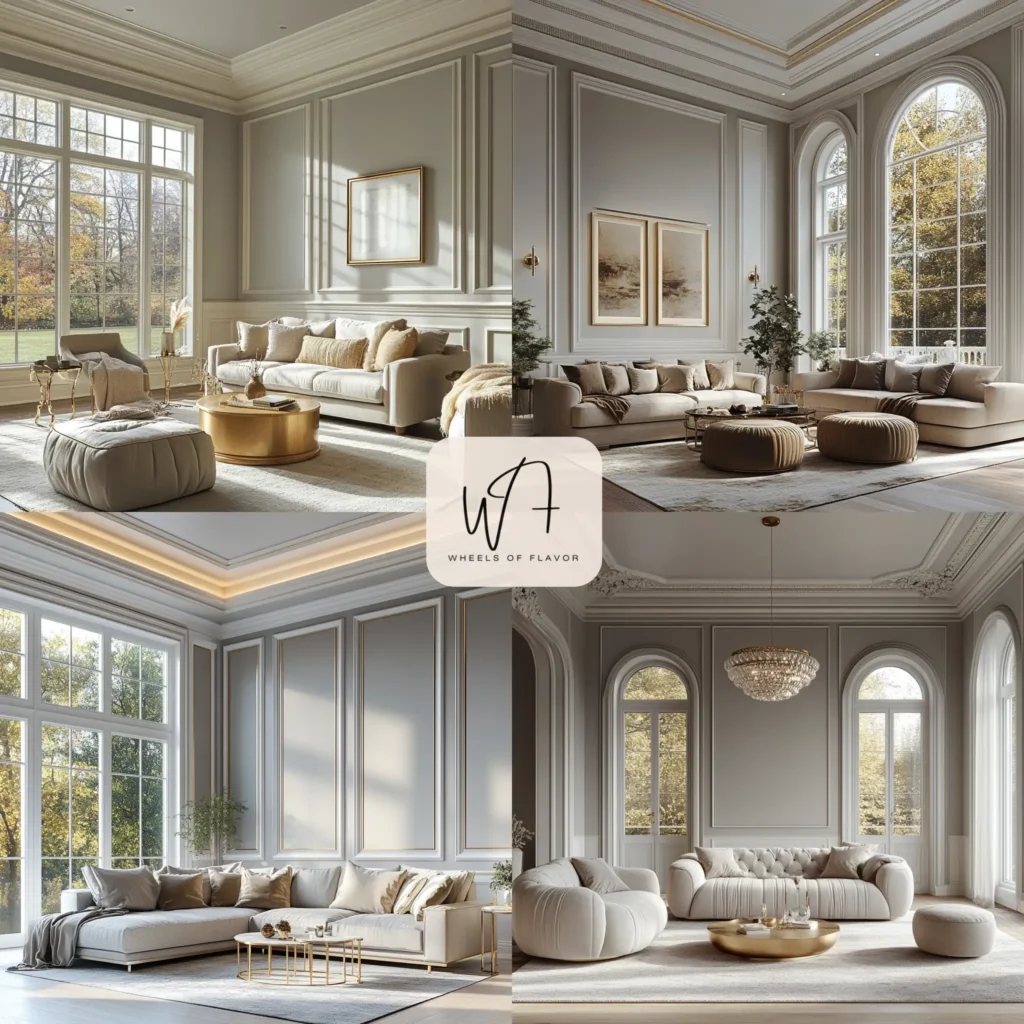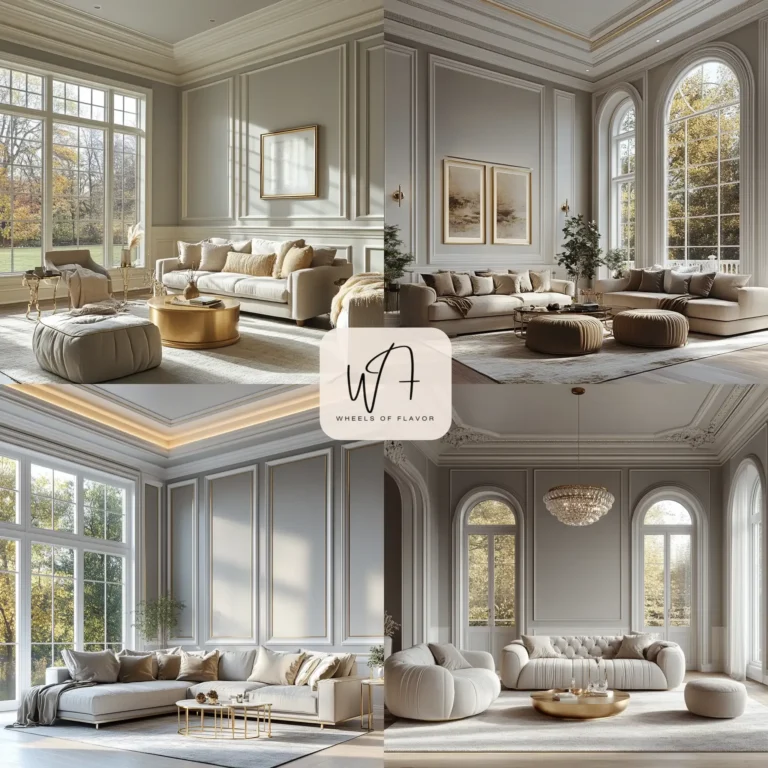Wall trim and molding are more than just decorative accents—they’re powerful design tools that add sophistication, character, and value to any space. Whether you’re renovating a single room or refreshing your entire home, incorporating wall trim and molding can create a polished, cohesive look. From classic crown molding to modern geometric designs, these elements frame your interiors beautifully, enhancing both style and functionality. In this article, we’ll explore seven stunning wall trim and molding ideas that can transform your home, along with practical tips to implement them.
Why Wall Trim and Molding Matter in Home Design
Wall trim and molding serve as the finishing touches that tie a room together. They define boundaries, highlight architectural features, and add depth to otherwise flat spaces. According to a 2023 report by Houzz, homes with well-executed trim and molding details can increase perceived value by up to 10%. Beyond aesthetics, these elements can conceal imperfections, protect walls, and even improve insulation in some cases.
Whether you prefer timeless elegance or bold, contemporary styles, wall trim and molding offer endless possibilities. Let’s dive into seven inspiring ideas to elevate your interiors.
1. Classic Crown Molding for Timeless Elegance
Crown molding is a staple in traditional and transitional home designs. Installed where the walls meet the ceiling, it creates a seamless transition that exudes refinement. Opt for intricate profiles in historic homes or sleek, minimalist designs for modern spaces. White or off-white crown molding pairs beautifully with neutral walls, while bold colors like navy or charcoal can make a dramatic statement.
Pro Tip: Choose a molding width proportional to your ceiling height—wider molding for taller ceilings and narrower profiles for standard rooms.

2. Picture Frame Molding for Sophisticated Walls
Picture frame molding, also known as panel molding, adds a touch of grandeur to any room. This style involves creating rectangular or square panels on walls using thin strips of molding. It’s perfect for dining rooms, living areas, or even hallways, giving walls a gallery-like appeal. Paint the molding and wall the same color for a subtle effect, or use contrasting shades for a bold look.
For inspiration, check out The Spruce’s guide to wall molding techniques, which offers step-by-step advice on achieving this look (https://www.thespruce.com/wall-molding-ideas-4172295).
Pro Tip: Space panels evenly and align them with existing architectural features like windows or fireplaces for a balanced design.
3. Chair Rail Molding for Functional Style
Chair rail molding, traditionally used to protect walls from chair backs, has evolved into a versatile design element. Installed about one-third of the way up the wall, it creates a natural divide for two-tone paint schemes or wallpaper combinations. For example, try a bold color below the rail and a neutral shade above to add visual interest.
This style works particularly well in dining rooms or children’s bedrooms, where practicality meets aesthetics. Explore more dining room trends on our website’s Styles and Trends section (https://wheelsofflavor.com/category/styles-and-trends/).
Pro Tip: Pair chair rail molding with wainscoting below for a cohesive, classic look.
4. Baseboard Molding for a Polished Foundation
Baseboard molding runs along the bottom of walls, concealing gaps and protecting against scuffs. Modern baseboards come in various heights and profiles, from minimalist flat designs to ornate, multi-layered styles. For a contemporary twist, consider tall baseboards (6-8 inches) painted in a high-gloss finish to contrast with matte walls.
Pro Tip: Match your baseboard color to your door trim for a unified look throughout the home.
5. Geometric Wall Trim for Modern Flair
For a bold, modern aesthetic, geometric wall trim is a game-changer. Think angular patterns, hexagons, or asymmetrical designs created with thin molding strips. This approach works well in minimalist or industrial-style homes, adding visual intrigue without overwhelming the space. Paint the trim in a metallic finish like gold or bronze for an extra touch of luxury.
Pro Tip: Use painter’s tape to map out your geometric design before installing the trim to ensure precision.
Image Prompt for MidJourney: A sleek, modern living room with geometric wall trim in black against white walls, featuring minimalist furniture, metallic accents, and soft natural light –ar 9:16
Image Alt: Modern living room with geometric wall trim and molding
6. Shiplap and Board-and-Batten for Rustic Charm
Shi-party lap and board-and-batten molding bring rustic warmth to any space. Shiplap, with its horizontal planks, is ideal for creating accent walls in living rooms or bedrooms. Board-and-batten, with its vertical lines, adds height and texture, perfect for entryways or bathrooms. Both styles pair beautifully with farmhouse or coastal decor.
For more rustic design ideas, visit our Styles and Trends page (https://wheelsofflavor.com/category/styles-and-trends/).
Pro Tip: Paint shiplap or board-and-batten in soft whites or muted greens for a calming, natural vibe.
7. Accent Wall Molding for Bold Statements
Create a focal point with an accent wall adorned with custom molding patterns. Combine different molding styles—like picture frame and chair rail—for a layered effect. This approach is ideal for bedrooms or home offices, where a single statement wall can define the space. Consider deep jewel tones like emerald or sapphire for the accent wall to amplify the drama.
Pro Tip: Use LED strip lighting behind the molding to highlight the design and create a cozy ambiance.
Tips for Installing Wall Trim and Molding
- Measure Twice, Cut Once: Accurate measurements are crucial to avoid costly mistakes.
- Choose the Right Material: Wood is durable but expensive; MDF is budget-friendly and easy to paint.
- Hire a Professional for Complex Designs: Intricate patterns like geometric trim or multi-layered crown molding may require expert installation.
- Prep Your Walls: Ensure walls are clean and smooth before installation to achieve a flawless finish.
For a deeper dive into home renovation tips, check out This Old House’s guide to installing trim (https://www.thisoldhouse.com/trim/21019208/how-to-install-trim).
FAQs About Wall Trim and Molding
What is the difference between trim and molding?
Trim is a general term for decorative elements that cover transitions or edges, while molding refers to shaped pieces used for ornamentation, like crown or chair rail molding.
How much does it cost to install wall trim and molding?
Costs vary based on material and complexity. On average, expect $1-$5 per linear foot for materials, plus labor costs if hiring a professional.
Can I install wall trim and molding myself?
Yes, simple designs like baseboards or chair rails are DIY-friendly with basic tools. Complex patterns may require professional skills.
What materials are best for wall trim and molding?
Wood offers durability and a premium look, while MDF and PVC are affordable and resistant to moisture, ideal for bathrooms.
How do I maintain wall trim and molding?
Dust regularly and repaint every few years to keep trim looking fresh. Use a damp cloth for cleaning, avoiding harsh chemicals.

